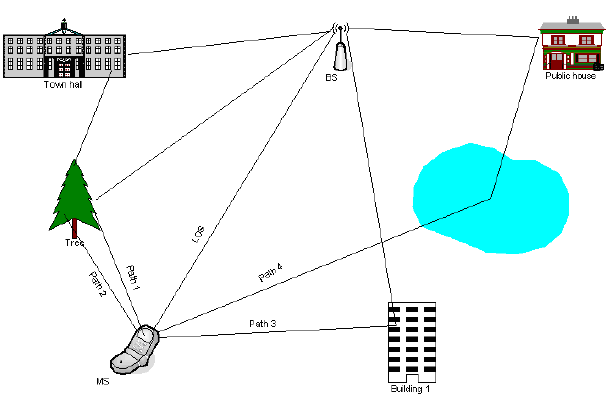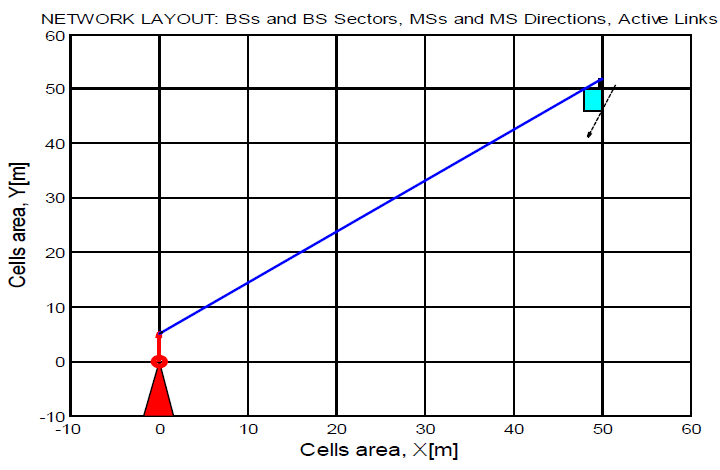ABSTRACTS
The demands of multimedia services from mobile user equipment (UE) for achieving high data rate, high capacity and reliable communication in modern mobile wireless systems are continually ever-growing. As a consequence, several technologies, such as the Universal Mobile Telecommunications System (UMTS) and the 3rd Generation Partnership Project (3GPP), have been used to meet these challenges.
However, due to the channel fading and the Doppler shifts caused by user mobility, a common problem in wireless systems, additional technologies are needed to combat multipath propagation fading and Doppler shifts. Time-variant channel estimation is one such crucial technique used to improve the performance of the modern wireless systems with Doppler spread and multipath spread.
The main goal of this study is to test the recently proposed method, time-variant channel estimation using Discrete Prolate Spheroidal Sequences (DPSS) to model the WINNER phase II channel model. The time-variant sub-carrier coefficients are expanded in terms of orthogonal DPS sequences, referred to as Slepian basis expansions. Both Slepian basis expansions and DPS sequences span the low-dimensional subspace of time-limited and band-limited sequences as Slepian showed.
Testing is done by using just two system parameters, the maximum Doppler frequency Dmax v and K, the number of basis functions of length N = 256. The main focus of this study is to investigate the Power spectrum and channel gain caused by Doppler spread of the WINNER II channel model together with linear fitting of curves for both the Slepian and Fourier basis expansion models. In addition, it investigates the Mean Square Error (MSE) using the Least Squares (LS) method.
The investigation was carried out by simulation in Matlab, which shows that the spectrum of the maximum velocity of the user in mobile wireless channel is upper bounded by the maximum normalized one-sided Doppler frequency. Matlab simulations support the values of the results. The value of maximum Doppler bandwidth vDmax of the WINNER model is exactly the same value as DPS sequences. In addition to the Power spectrum of the WINNER model, the fitting of Slepian basis expansion performs better in the WINNER model than that of the Fourier basis expansion.
TIME-VARIANT CHANNEL

Figure 2.1.1 Multipath propagation phenomena of the signal from the transmitter (BS) to the receiver (MS)
The receiver receives the scattered signal from the transmitter and these scattered signals cause the Doppler spread and the fading. Figure 2.1.1 shows different obstacles between the transmitter and the receiver and five different components of multipath propagation produced by isolated obstacles. In general, the receiver receives the electromagnetic waves of different paths from the Base Station (BS) in the mobile wireless channels.

Figure 2.1.2 The Network layout for one radio link for WINNER model
Figure 2.1.2 shows the network layout of the WINNER model with the segments of the car moving at different distances shown in green color. In the figure shows also multiple links. The simulation of the WINNER model in this thesis is done with only one radio link with small-scale parameters as it can be seen in the figure marked with blue dashed lines.
PROBLEM DEFINITION
Testing the recently proposed method time-varying channel estimation using the Discrete Prolate Spheroidal Sequences and the Fourier basis expansion of the block length N = 256 symbols to model the WINNER phase II and using K, the number of basis functions for performance comparison. Investigate all three models by using just two system parameters: the Doppler bandwidth vDmax and the length of the data block length N = 256 symbols in mobile wireless communication channel at three different velocities of the user vmax (Both at high and low mobility).
SYSTEM MODEL
![Figure 4.2 Slepian sequences [ ] i u m for block length N = 256, D´ = 3 and Dmax v = 0.0039](http://projectabstracts.com/wp-content/uploads/2017/11/p-04109-channel-estimation-2.png)
Figure 4.2 Slepian sequences ui [m] for block length N = 256, D´ = 3 and vDmax = 0.0039
POWER SPECTRUM ESTIMATION
This thesis uses the Power spectrum of the WINNER channel in order to determine and investigate the Doppler frequency of the time-variant channel. Before proceeding, the power spectrum estimation of the channel is briefly explained. Estimating of the sequence of time samples of the transmitted random signal is the same as estimating the power spectrum of the transmitted signal. Estimating the power spectrum is equivalent to estimating the autocorrelation. The Power spectrum helps us to understand the long term behavior of transmitted signal by taking the Fourier transform of the signal.
- The Periodogram
- Periodogram with Rectangular window
SIMULATION RESULTS AND ANALYSIS

Figure 6.1 BS, MS, active link and direction of the MS
Figure 6.1 shows the Base Station (BS) in red, the link in dark blue together with the Mobile Station (MS) in blue, which is situated 50 meters far away from BS and moves at the velocity of 102.6 Km/h towards south west. The number of the samples of the channel (Data length) N is 256*32 = 8192, number of FFT coefficients is 8000, length of Window is 8000, and the sample frequency of the channel fs = 1/Ts 48.6*103 Hz. The Blackman window – sidelobe suppression (-58 dB) has been applied.
DISCUSSION
The results from simulations can provide important data on three things, the Power spectrum of channel process of the WINNER model, the linear curve fitting, and the values of the Mean Square Error (MSE) using Least squares method.
- Power spectrum of the channel process of the WINNER model
- Fitting of the curves
- The Mean Square Error (MSE)
CONCLUSION AND FUTURE WORK
Future Work
In order to achieve a reliable communication system capable of meeting the demands of the future, it is important to estimate the time-variant channel as accurately as possible, i.e. as close to the true channel as possible. In order to estimate the channel accurately, the velocity of the user must be estimated. It is necessary to estimate the velocity of the user for the Slepian basis expansion because good performance of the Slepian depends on sequences of the Slepian basis expansion complying with the velocity of the user. For high data rates and high capacity of the system, many methods remain to be investigated.
Conclusion
An important and crucial part of modern mobile wireless systems is channel estimation, which helps the system deliver high data rates and achieve the maximum transmission rate by accurately estimating the wireless channel. Slepian basis expansion and the WINNER model can be applied for Long Term evolution systems in the future. This investigation has been done by using three parameters, the maximum Doppler bandwidth vDmax, velocity of the user vmax, and the block length of N = 256 symbols.
The thesis evaluates and compares the performance of the three methods of channel estimation: Slepian basis expansion, Fourier basis expansion and the WINNER phase II model. It is concluded that Slepian basis expansion fits the WINNER model better than Fourier basis expansion at both a lower and higher values of K. The Fourier basis expansion does not fit well in either condition at both the beginning and at the end of the block length of sequences N = 256 symbols.
Source: KTH
Author: Pazi Alli Idd
>> Simple Matlab Projects for EEE Final Year Students
>> 40+ Telecom Projects for Final Year ECE Students
>> Wireless Communication Projects for Students
>> Wireless Communication Projects for Students
>> More Matlab Projects on Signals and Systems for Final Year Students
>> 80+ Matlab Projects based on Power Electronics for Engineering Students